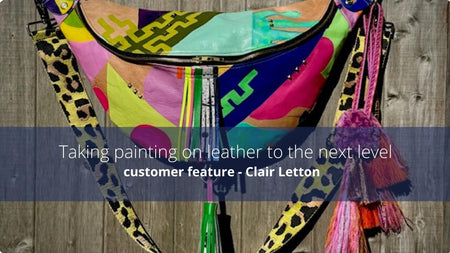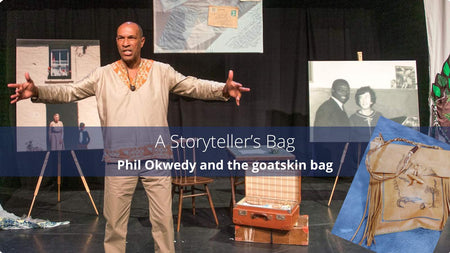Have you ever tried to figure out thread thicknesses? If you find it confusing, then rightly so! There is surprisingly no universal standard for threads making it hard to compare them.
There are several classifications – weight (wt), Tex (T), Dernier Count (Td or d) and Commercial (V), and more commonly understood – thickness in terms of thread diameter.
The most common for hand stitching are the first two. Wt is measured by measuring the length of 1 gramme of thread, so if a thread is 30metres long and weighs 1 gramme it is a 30 thread. Therefore the higher the number the finer the thread.
Often the Wt number is followed by another number eg 30/2 or 30/3, this denotes how many ‘plies’ or strands are twisted together – like with wool 2 ply or 3ply.

Tex (T) is the most consistent method – taking 1,000 metres of thread and weighing it. In this case the higher the Tex the heavier the thread.
If another measurement is given this is usually the weight of the thread on the spool.
Where possible with our threads we give an approximation based on decimal millimetres width or diameter as this is the most visual and easy to understand.
Our top selling small spools of code 1227- for example are 0.8mm approx.

Some of our threads in order of width – from left to right – Coats Barbour (linen, unwaxed), Somac Linen Thread Fine (3/25 ie 3 ply or cord, 25Wt), Somac Linen Thread Standard (3/18 ie 3 ply or cord, 18Wt), 1227- standard waxed polyester thread 0.8mm, and 11210 Waxed Braided Cord approx. 1mm.
Things to consider:
Heavier or larger threads make your stitching more visible. Stitch thickness is an aesthetic choice – are you looking for something that suits the end product, are you looking to make the stitching a statement or contrast or design detail? Will the stitching be decorative or to hold the item together?
Threads need to fit into stitch holes, as a rule a leather chisel or stitching awl will take a thread up to 1mm maximum. The thicker the thread the harder it is to pull the stitch through neatly.
Waxed or Unwaxed – threads that are pre-waxed are dipped during the production process giving an even coating over and through the thread. Hand waxing coats the exterior of the thread only. For leather workers, waxed thread not only is protected, it slides more easily through stitch holes and then catches tight enabling the use of neat stitches such as traditional saddle stitch.
Note - threads that might measure the same thickness may appear thicker if they are sold pre-waxed.
Will the stitching need to be waterproof, or be easily rubbed against? If so, you will need to consider a synthetic thread.
Synthetic threads will have greater durability over their lifetime than linen threads, however if you are repairing something or making something to be authentic, it is worth noting polyester threads were in common use from the late 1950’s onwards.
Polyester Thread
It has a stronger tensile strength than cotton or linen, and is more resistant to abrasion, mildew and UV light. The downside is it will kink more easily and will melt at high temperatures.
Nylon Thread
The benefits of nylon thread are it’s shiny coating that makes it more waterproof and more easy to slide through a sewing machine.
A favourite of many leatherworkers, Tiger Thread is 100% polyester finely braided thread, renowned for its strength, durability, and UV resistance. It is liked for the smoothness and neatness of the stitch it gives. The thread is finely braided into a flat, rather than round contour, which increases its strength greatly. It is lightly waxed allowing it to hold it's shape and stay in place as you stitch.
Braided versus Twisted (Stranded) Thread

Keeping it simple with our best selling large eye stitching needle, it has the advantage of being very easy and quick to thread.
The eye of the needle is shaped outwards and is therefore wider in diameter than the rest of the needle. This needle works best with a good clean open stitch hole.

Harness Needles
Needles with a small eye made from tempered steel for strength. The narrow slim eye makes the needles easier to get through stitch holes but harder to thread. The larger the number the larger the needle.
Small - Size 1/0 harness needles: 56mm length, approximately 0.5mm diameter tapering to a blunt pointed end.
Medium - Size 2/0 harness needles: 59mm length, approximately 0.8mm diameter tapering to a blunt pointed end.
Large - Size 3/0 harness needles: 62mm length, approximately 1.2mm diameter tapering to a blunt pointed end.

Needles with a three side angled tip which is very sharp, for piercing through leather such as gloving weight, sheepskin nappa, hair on hides and other thinner leathers where no stitch holes have been made beforehand. In this case the larger the number the smaller the needle.
Size 1 Glovers needle: The largest in length and width, will make approximately 1mm stitch holes and can be used with fine leathers up to around 1.0mm.
Size 2 Glovers needle: Will make approximately 0.75mm stitch holes and can be used with fine leathers up to around 0.8-1.0mm.
Size 3 Glovers needle: Will make approximately 0.5mm stitch holes and can be used with fine leathers up to around 0.6-0.8mm.
Size 5 Glovers needle: With a very small eye suitable for the finest of threads and can be used with fine leathers up to around 0.6mm.

It is generally considered that the eye of the needles should around 40% bigger than the thread.
Download our Needle.Thread and Chisel Size Guide:
Useful Sources:









